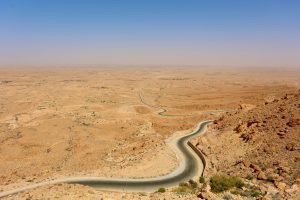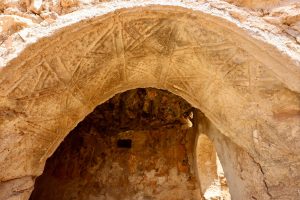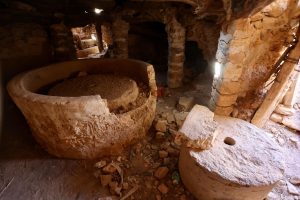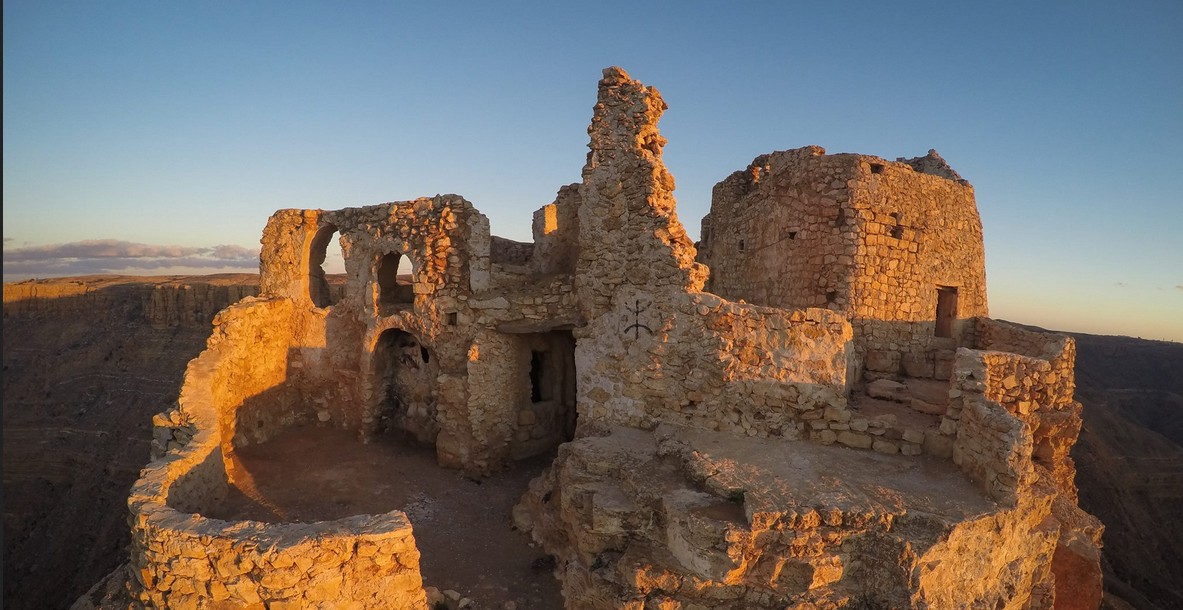The abandoned and ancient stone village of Tarmisa or Tarmeisa ( Locally called Itermisen ), clings to a narrow, rocky outcrop overlooking the Sahel al Jefara and is one of the most evocative of the ancient Amazigh settlements in the Nafusa Mountains.
 The only entrance to the town is from the car park at the road’s end across a dirt ‘bridge’ with a deep trench on either side. This was once the town gate, with a draw bridge surrounded on three sides by plunging cliffs.
The only entrance to the town is from the car park at the road’s end across a dirt ‘bridge’ with a deep trench on either side. This was once the town gate, with a draw bridge surrounded on three sides by plunging cliffs.  The bridge was opened every morning at 6am and closed again at 6pm, effectively sealing off the town. The first house you come to on your left was one of the last to be abandoned in the late 1950s. Look for the tunnels leading underground to the houses,
The bridge was opened every morning at 6am and closed again at 6pm, effectively sealing off the town. The first house you come to on your left was one of the last to be abandoned in the late 1950s. Look for the tunnels leading underground to the houses,
one of which contains a huge oil press.
Entering the village proper, there are plenty of small doorways and passageways to explore. About halfway through the village, one house on the eastern side contains a well preserved bridal room (for use on the wedding night), which has traces of relief carving patterns and attractive storage alcoves. Else where, note the roofs reinforced with a multitude of palm or olive tree trunks.
The buildings at the northernmost (and narrowest) end of the village include a mosque with a squat, pyramidal minaret. Most of the structures in this section were rebuilt in 1205, suggesting that the original construction of the village took place much earlier. There are fantastic views from here, and a stunning vista down off the escarpment over the Sahel al-Jefara, with its hundreds of snaking wadis heading northwards. Be very careful as there are no rails to prevent unsuspecting travellers from falling.






